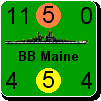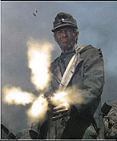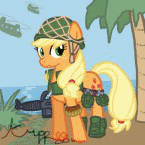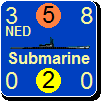Red Prince
Posts: 3686
Joined: 4/8/2011
From: Bangor, Maine, USA
Status: offline

|
quote:
ORIGINAL: Shannon V. OKeets
quote:
ORIGINAL: Patton_71
I guess my concern with the maps is of a different nature.
And forgive me if this has been discussed before, but now that the Asian map is full-sized, it seems to me that this has had an unintended effect on game balance. With the lowering of the movement rates to the European level, along with the size increase, the Chinese front is much more a war of maneuver than ever before. With the Chi-coms only having 5 moves at most, and facing a now suddenly much more mobile enemy, with much more area to defend, I am concerned that the Chinese front can only be saved by immobilizing the USSR prior to Barbarossa. Looking at the current AAR example being run by Red Prince, the drain in the capability of Russian deployments are drastic, but still the Chinese are having difficulty matching Japanese maneuverability.
One of my personal life rules is not to raise a complaint without posing a possible solution. My suggestion is this: for every USSR land move allocated to the Chi-coms, they may move 2 units. This still allows an effect upon the Soviets, but since the Chinese front has changed from a WWI style 'hunker down and hang on' game when using the original maps to one of maneuver, I think this to be a fair compromise.
Any thoughts?
Patton
My sincerest apologies to Aaron here. I come from the world of tournament chess where after each game the players sit down and criticize the 'heck' out of each other's play. I come from the world of tournament chess where after each game the players sit down and criticize the 'heck' out of each other's play.
---
Aaron wasn't very good at land defense so using his AAR as an indication of the Chinese having a hopeless position regardless of what they do isn't justified by the AAR. Take a look at what happened to France, Spain, Gibraltar, and Egypt. Would you make the claim that all of those countries are doomed to fall to the Axis before the end of 1940?
Yes, the scale has changed the action in China significantly. In fact, there are 6 times as many hexes in China now. But there is excellent defensive terrain, with a series of frontlines possible that are virtually all mountain hexes.
In the AAR:
1 - the Nationalist Chinese set up too far forward without regard to them being cut off. That let Japan penetrate the frontline in several places and destroy most of the Nationalist army with high odds attacks. Then the Japanese had an easy time of advancing into the Chinese interior.
2 - the Chinese did not make good use of the mountain terrain and alpine hexsides when forming their defensive lines.
3 - the Nationalist Chinese gave up hexes by the score rather than let Japan make a single good attack on a hex.
4 - having evacuated the mountain terrain, the Nationalist Chinese ended up making their last stand defending in clear hexes.
5 - Instead of the Communist Chinese retreating back to Lanchow where they could have held a frontline, they defended Sian, letting the Japanese get behind them so that they were surrounded and defended in a circle.
6 - The Chinese placed its only oil point in the frontline, letting it be destroyed (captured?). This made reorganization of the Chinese HQ's impossible, so once Mao became disorganized he remained disorganized and immobile (in clear terrain).
7 - I don't know what happened to the Chinese fighter, but it didn't last very long.
8 - By retreating, the Chinese gave the Japanese maximum mobility for positioning their units for attacking. When the Japanese are locked in enemy ZOCs, their 3 movement units are hard pressed to rearrange themselves to optimize attacks and/or ooze through openings in the lines. As it was, the Japanese needed to commit 3 HQ's to keep their units in supply, even after the Nationalist interior cities fell.
9 - partisans were never a concern here because the Chinese fled from the Japanese, so there were always a lot of Japanese out of enemy ZOCs to 'garrison' against partisans.
China is difficult to play, both in WIF FE and in MWIF. It doesn't take very many mistakes before the Chinese are reeling from the Japanese onslaught. But that is true in WIF FE too. Have you ever tried to hold the coastal hexes as the Chinese?
As for the Communist Chinese having too few land moves available, that wasn't a problem in the AAR game until the Nationalist Chinese had virtually disappeared from the map. Also, Aaron preferred to conduct a mobile defense (which requires a lot of land moves), retreating from the Japanese instead of holding onto mountain hexes and forcing the Japanese to attack strong points.
No apologies required -- I haven't yet learned how to defend effectively, which is why I've been asking for thoughts in the AAR about the coming Barbarossa.
Also, and my own sincere apologies for pointing this out, Steve, I took the setup directly from one of your posts in the Chinese AIO thread.  The reason I did this was because I have yet to make a successful setup for the Chinese Nationalists. Unfortunately, I didn't read far enough ahead to see the concern that were presented regarding your suggested setup. The reason I did this was because I have yet to make a successful setup for the Chinese Nationalists. Unfortunately, I didn't read far enough ahead to see the concern that were presented regarding your suggested setup.
To respond to a few of your notes:
quote:
3 - the Nationalist Chinese gave up hexes by the score rather than let Japan make a single good attack on a hex.
This mistake was brought on by some reading I did regarding Barbarossa defense strategies. At the time I started the AAR the RAW says practically nothing that applies to the expanded map, and I just didn't want to read through dozens (?) of pages of Chinese AIO thoughts before getting started. This made me think that pulling back a hex or so at a time would allow me to ZOC and prevent the "oozing through" of Japanese forces. I should have realized that defense in one region doesn't necessarily work well in another.
quote:
5 - Instead of the Communist Chinese retreating back to Lanchow where they could have held a frontline, they defended Sian, letting the Japanese get behind them so that they were surrounded and defended in a circle.
I stil disagree with this. By the time it was clear that a defense had to be set up (whch came a turn later than it should have, perhaps), there was no possible way . . . repeat no possible way for me to get the needed units to the Lanchow region without having them picked off in single-stacks. If I tried to use double stacks, I would have lost both cities to Japan and been trapped in the middle. From the positions they started at when I tried to begin the retreat, and with the movement points available to each unit, there was no way 5 moves an impulse could get me to Lanchow.
quote:
6 - The Chinese placed its only oil point in the frontline, letting it be destroyed (captured?). This made reorganization of the Chinese HQ's impossible, so once Mao became disorganized he remained disorganized and immobile (in clear terrain).
The Oil Point placement was just plain dumb, but then I didn't realize I could place it in a Communist city, since it is set up by the Nationalist Chinese. In fact, I don't think I could have.
quote:
7 - I don't know what happened to the Chinese fighter, but it didn't last very long.
I could look it up, but I won't bother. It lasted roughly 3 turns and was shot down. If I remember correctly, it took one of the Japanese FTRs with it.
-----
While I completely agree with Steve that the AAR should not be taken as an indication of the futility of the Chinese cause on the expanded Asian map, I still do have concerns about it. It seems to me that in order to either double-stack at setup, or even single-stack in mountainous terrain in a manner that would keep the Japanese from slipping through, the defense would have to start the game behind Kweilin, which gives up a lot of terrain to the Japanese right off the bat.
-----
Centuur, I do appreciate your support. Steve and I have talked about this, actually. Offensive operations tend to be easier to learn and adapt than defensive operations, and while I expect you're right that I'll learn how to conduct defensive operations well eventually, it's probably going to take me quite some time. The Barbarossa AAR that Orm and I ran taught me that defense played well can be very frustrating to an offense-oriented player, and I hope to bring some of what he taught me to the upcoming Barbarossa. The truth is that I am much better at exploiting opportunities offensively than defensively.
That said, I do have an opportunity to put that entire western force near Sian out of supply, but I haven't decided if it will be a sufficient benefit. I have to figure out if the Japanese can manage to re-establish supply within an impulse or two before making that decision.
Best regards to all.
-Aaron (the fool who decided an AAR would be fun) 
_____________________________
Always listen to experts. They'll tell you what can't be done and why. Then do it!
-Lazarus Long, RAH
|
 Printable Version
Printable Version

















 I come from the world of tournament chess where after each game the players sit down and criticize the 'heck' out of each other's play.
I come from the world of tournament chess where after each game the players sit down and criticize the 'heck' out of each other's play.


 If you want to USE the map, it has to communicate information quickly and easily.
If you want to USE the map, it has to communicate information quickly and easily. 







 New Messages
New Messages No New Messages
No New Messages Hot Topic w/ New Messages
Hot Topic w/ New Messages Hot Topic w/o New Messages
Hot Topic w/o New Messages Locked w/ New Messages
Locked w/ New Messages Locked w/o New Messages
Locked w/o New Messages Post New Thread
Post New Thread